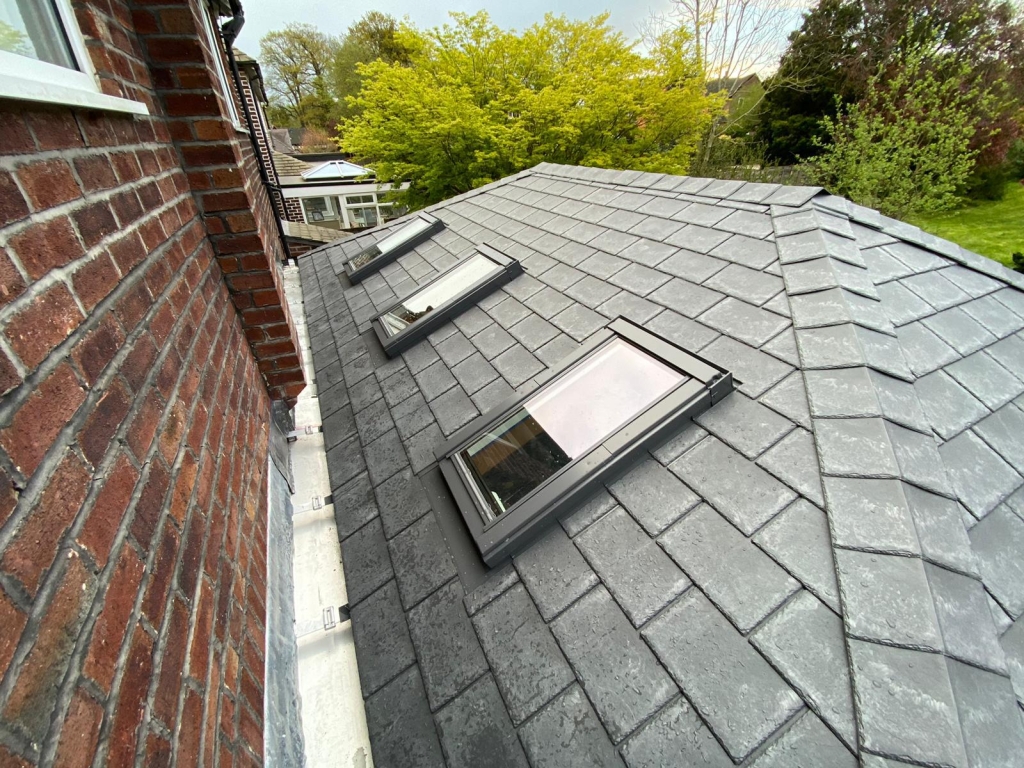
In the UK, the lifespan of a typical roof depends heavily on the material used and how well it has been maintained. Slate and clay tiles are traditional choices for British homes and can last 50 to 100 years if properly installed and maintained. Concrete tiles offer a more affordable option and are still durable for 40-60 years. This makes them an attractive choice for homes of today. The life expectancy for felt roofs is usually 20-30 years. They are often found on garages and extensions. Patch repairs can be expensive and may not extend the roof's life. A professional roof inspection can determine if a replacement is needed and which options best suit the structure and location your home. During the assessment, factors such as roof pitch and condition of underlayment should be taken into consideration.
Replacing a roof in the UK involves careful planning, especially when it comes to selecting materials that comply with local building regulations and weather requirements. For example, listed buildings or homes in conservation areas may require specific types of tiles or slates that match the original aesthetic. In addition to their aesthetic appeal, materials should be able to withstand the regional climate, especially in regions prone heavy rain or high winds. Many homeowners choose slate or tiles because of their classic look and durability. However, modern options such as composite and synthetic tiles have gained popularity due to their energy-efficient design and lightweight construction. Replacing a roof is also an opportunity to improve insulation and ventilation, helping to lower energy bills and increase indoor comfort. Good contractors will consider all of these factors and provide guidance for the most suitable solution to each house.
The cost of Typical roof replacement prices in the UK is an important factor, and UK home owners should expect a range of prices depending on both the complexity and size of the project. A typical roof replacement on a three-bedroom semi-detached house can cost anywhere from 5,000 to 12,000, with variables such as material choice, roof shape, accessibility, and required scaffolding affecting the total cost. Labour charges often make up the bulk of the expense, especially if there are complications like chimney flashing, skylights, or structural timber repairs. You should get multiple estimates from roofers who are certified and make sure that they include the entire scope of work, including permits and warranties. While cheaper options might be tempting, cutting corners on quality or experience can lead to bigger problems down the line. Choosing a roofing contractor who belongs to professional organizations like TrustMark or the National Federation of Roofing Contractors can give you peace of mind. To acquire further details please get More hints

Timing is an important consideration when planning a roof replacement in the UK. The best time for such a project is during the spring or early autumn, when weather conditions are generally more predictable. Project delays and complications can be caused by cold winters or wet summers, particularly if you leave the roof exposed too long. The homeowner should consider the length of time it will take to complete the project. A full roof replacement can typically be completed in between one week and two weeks depending on how large and complex the home is. Scaffolding may be installed and there will likely be more noise than normal during this period. Planning ahead by informing neighbours and preparing for minor disruptions can make the experience smoother. A well-organised roofing team will work efficiently to complete the job while ensuring safety and cleanliness throughout the process.
In the UK, roof replacement is a vital part of home maintenance. It should be done as soon as signs of wear and tear appear. A well-installed new roof protects against harsh weather, improves insulation, and boosts property value. With a range of materials and styles to choose from, as well as evolving technologies, homeowners can tailor their new roof to fit both aesthetic preferences and practical needs. Although the cost can be considerable, the long-term benefits - including energy savings, structural safety, and peace of mind - make it a worthwhile investment. Careful planning, the right contractor, and informed decision-making are the keys to a successful roof replacement. For UK homeowners looking to protect their homes for decades to come, replacing an ageing roof is one of the smartest improvements they can make.